15. Degrease your range hood
Ducted or vented range hoods can be a great way to remove heat, smoke, grease and odors from your kitchen. Unfortunately, those same things can gum up your range hood and shorten its life expectancy, which is 14 years, according to the National Association of Home Builders (NAHB) and Bank of America Home Equity.
Grease buildup in particular can clog your range hood, which might degrade its performance and force its fan motor to work harder until it eventually breaks. To eliminate buildup — or better yet, prevent it altogether — start by removing and cleaning the vent filter once a week, Hood suggests. “If it’s dishwasher-safe, throw it in the dishwasher. If not, let it soak in a solution of dishwashing detergent and baking soda,” she says. “Depending on the level of greasiness, let it soak anywhere from 10 minutes to a couple of hours, or even overnight. Use a soft-bristle brush to gently scrape the residue off.”
While you’re cleaning the filter, also check the motor and the duct that connects your hood to the exterior of your home. If the former is dirty, you can wipe its visible surfaces with a degreaser. If you notice a lot of buildup on the latter, you should call a professional to clean it.
16. Clean your dishwasher
A clean dishwasher is a working dishwasher, according to Shimek, and a working dishwasher should last eight to 10 years, Angi says. “Every three to six months, run an empty cycle with a dishwasher cleaner to remove calcium deposits,” Shimek suggests. “This prevents the sprayer arm from becoming clogged, so you don’t have to worry about repairing it prematurely.”
If your dishwasher has a removable filter — it will be located beneath the sprayer arm if it does — that also should be cleaned regularly. “Remove it and rinse it out in your sink once a month to prevent bad smells or a clogged drain pump,” Matta says.
You can give your filter a helping hand by rinsing dishes before loading them. “We always recommend scraping all food from plates and dishes before loading them into the dishwasher. Food can cause it to clog,” says Tanya Christian, a senior home and appliances writer at Consumer Reports.
17. Check your dishwasher’s water hose
If your dishwasher is leaking, don’t panic. You might be able to repair it yourself, according to Christian. “It depends where the leak is,” she says. “If it’s the front of the machine, it could be the water hose. In that instance, you would remove the kickplate and tighten the water hose.”
18. Avoid putting knives in the dishwasher
Because the high temperature and moisture can damage both the handle and the steel, putting chef or cutting knives in the dishwasher is an easy way to ruin them. But knives are just as bad for the dishwasher as the dishwasher is for knives, says Parvathy Pothan, founder and editor of Everything Better, a website dedicated to appliance reviews and buying guides. “Never put sharp objects like knives in the dishwasher,” she advises. “They may scratch the sides and expose the metal underneath. This could develop into full-blown rust in no time.”
Another no-no is candleholders. “Avoid putting votives or candleholders in the dishwasher without first ensuring all of the wax is removed. This can cause wax residue buildup that, if not removed, over time can clog the wash and drain pump,” Hood says.
19. Clean your microwave
The average microwave lasts about 10 years, according to Consumer Reports. Yours will work better — and last longer — if it’s clean inside. “Splatters on the inside of the microwave seem harmless, but over time they can turn rock-hard and even burn the walls of this small appliance,” Shimek says. “Clean out the microwave with all-purpose cleaner regularly to prevent the need for premature repairs and replacement.”
For stubborn food stains, try baking soda and vinegar. “Start with equal portions of white vinegar and baking soda in a microwaveable dish,” suggests Rocky Vuong, director of Calibre Cleaning, an on-demand house-cleaning service based in Melbourne, Australia. “Then microwave on high for one minute. After that, leave to soak for 10 minutes. Finally, rinse with a clean cloth and warm water until all traces of vinegar and baking soda are gone.”
20. Keep problem foods out of your garbage disposal
The Association of Home Appliance Manufacturers says your garbage disposal should last about 11 years. Using it properly will increase the odds that it does.
“Never pour fats, oil or grease into your disposal. They congeal and eventually cause clogs further downstream in the water system,” says Keith Flamer, a home and appliances writer at Consumer Reports. “Creamy foods like peanut butter, heavy cream, butter and ice cream are also a no-no. Fibrous fruits and vegetables like artichokes and orange peels, starchy waste like pasta and rice, and shellfish and eggshells are also a bad idea because they don’t break down or decompose easily, which can gum up plumbing.”
How you grind food is as important as which foods you grind. While the disposal is running, keep a steady stream of cold water running to ensure that food waste washes away. Cold water keeps the motor from overheating and solidifies grease and fat so that they don’t congeal inside your disposal.
21. Find the reset button on your garbage disposal
Your garbage disposal will shut down automatically if it’s clogged, if it overheats or if there’s a problem with the motor. Fortunately, there’s usually an easy fix: pressing the reset button.
“After turning off the disposal, press the red or black reset button on the bottom of the appliance,” advises Doyle James, former president of Mr. Rooter Plumbing. “If pressing reset doesn’t work, check to see if a fuse is blown or the circuit breaker is tripped. If so, move the lever to reset the breaker.”
Of course, if your disposal shuts down because of a clog, you’ll need to clear it. “Some disposals have an accessible area on the bottom to use a hex wrench to free a jam by spinning the grinding chamber,” James continues. “An alternative method is to use a broom handle from inside the sink to spin the grinding chamber to clear the jam. Be sure the electric switch is in the off position before attempting either of these methods.”
22. Clean your coffee maker
Your coffee maker should last about five years. If it gets clogged with minerals and other gunk, however, it might stop making coffee even sooner. If that happens, you don’t necessarily need to buy a new coffee maker; you might just need to clean the one you have, says Alex Mastin, founder and CEO of Homegrounds, an online community for coffee hobbyists.
“Start with dumping out old grounds and coffee from the carafe, and rinse it thoroughly. Next, fill it up with equal parts white vinegar and water. Place the brew basket and carafe in their usual positions, and let the process continue like any other day — brewing, but without coffee grounds,” Mastin says. “The white vinegar is antibacterial and works as a great disinfectant. Do this process for 30 minutes, or the half-brew cycle, and turn it off. Let it sit for 30 minutes before turning it back on. Empty it out, and rinse it with clean water. Run through the entire process with clean water twice to ensure you got all the white vinegar out.”
You can use the same process to clean out a Keurig coffee maker.
IN THE LAUNDRY ROOM
23. Avoid a moldy washing machine
Mold and mildew are common problems in washing machines, especially if you have a front-loading washer. Although washing machines should last eight to 10 years, according to Angi, mold and mildew can seriously hamper the machine’s performance during that time. To prevent mold and mildew in your washing machine — which can make you sick, cause your clothes to smell and even hurt the machine itself — Matta says there are three things you should do immediately after using it. “First, dry as much moisture out of the door gasket as possible,” she says. “The drier the gasket is, the less opportunity mildew will have to grow.”
Next, leave the door open. “Letting your washer air out when not in use will prevent any remaining water from condensating near the gasket,” she continues.
Finally, remove the detergent drawer completely. “On most front-load washing machines, this is done by pressing down on the release tab found at the back top area of the drawer when the drawer is fully open,” Matta says. “It is normal for water to collect in this drawer, so removing it will remove the extra moisture.”
It’s also a good idea to run a washing machine cleaning product through your washer once a month.
24. Clean your washing machine filter
You probably clean the lint trap in your dryer, but what about the drain pump filter in your washing machine? Many front-loading washing machines have one to catch lint, hair and other obstructions. If it’s clogged, your machine won’t work as well as it should. It might have trouble draining, for instance, and you could end up with lint deposits on your clothes.
“To locate your drain pump filter and how to clean it, refer to your user manual, as this varies from brand to brand,” Matta says.
25. Level your washing machine
The drums on your washing machine can spin at rates of up to 1,600 rotations per minute, according to Consumer Reports. At that speed, they must be perfectly level to function properly. If they’re not, the machine may vibrate so much and so hard that it is damaged. To prevent this from happening, adjust the washer one foot at a time, using a level on all four sides to ensure that it’s steady, suggests Richard Handel, Consumer Reports’ senior test project leader for major appliances.
26. Wash your clothes with HE detergent
You may be able to extend the life of your washing machine simply by selecting the right soap. High-efficiency (HE) laundry detergent — which produces fewer suds and disperses more quickly in less water — is best, according to Hood. “Using non-HE detergent increases the risk of oversudsing, which can cause the machine to overwork trying to remove the suds,” she says.
The result can be a clogged pump, an overheated motor and increased risk for mold and mildew — not only in front-loading machines, for which HE detergent was designed, but in all machines. “Most machines of all types now recommend HE detergents,” Handel says.
27. Silence your squeaky dryer
Clothes dryers should last up to 15 years, according to Sears Home Services. If yours is squeaking, it’s a sure sign that it might not make it that long.
“If your dryer is making a squeaking noise, get it serviced as soon as possible,” Matta advises. “Most dryers have a pulley, and the bearing on this pulley often squeaks when it’s starting to go bad. If the pulley breaks, your dryer won’t tumble. So it’s important to address this issue as soon as you can.”
28. Don’t overstuff your washer and dryer
If you want your dryer to work better and last longer, err on the side of several smaller loads instead of fewer large loads, suggests Handel. “A dryer works by allowing the hot air to flow between and among the items in the load. If you overstuff it, you don’t get that air flow, which will lead to uneven drying, longer drying times and more stress on the machine,” he says.
What constitutes a right-sized load will depend on what you’re drying — bulky towels need more space than delicates, for example — but aim for a little over half full. “A good rule of thumb is to only fill the dryer to approximately 60 percent,” Hood says. “Doing so will allow for enough air movement through the entire drum, allowing the dryer to perform most efficiently.”
Large loads can be a problem for washers, too. “Ensure that you always balance the load,” Pothan says. “If it vibrates a lot, stop the cycle and take out a few clothes. If the washing machine vibrates excessively, it will throw off the alignment of the drum and motor, thereby reducing its lifespan.”
29. Throw away your dryer sheets
Dryer sheets can reduce static and make your clothes smell nice. When it comes to dryer health, however, they do more harm than good, according to Jason Kapica, former president of Dryer Vent Wizard. “Dryer sheets … they leave a waxy buildup on the lint screen that reduces or blocks airflow. This reduction in airflow leads to increased drying times, mold and mildew, excess wear and tear on clothing and the dryer, increased energy costs and increased risk of fire,” he says. “If you choose to use dryer sheets instead of alternatives — dryer balls are a great choice — make sure you wash the lint screen every three to six months.”
To wash the lint screen, soak it in hot soapy water and use an old toothbrush to scrub it. “To make sure the screen is working properly, run water through it,” Kapica continues. “If the water pools up, you still have a problem. If the water flows through like expected, this means air can pass through. The waxy buildup is not always visible, so the water test is very important.”
30. Eliminate dryer lint
Dryer-sheet wax isn’t the only thing that collects in your dryer’s lint screen. There’s also lint, of course, which you should remove from the lint screen after every use, according to Hood. “Lint is a flammable material that, if not cleaned, could build up in the vents,” she says. “A lint filter with just two dry cycles of lint can greatly reduce airflow, create longer drying times due to obstructed air and increase your chances of lint buildup in the ducts, which over time can increase the risk of a lint fire.”
You should clean your dryer vent — everything from the exhaust port on the back of the dryer to the exit point on your home’s exterior, and all the ductwork in between — once a year, according to Rick Bohdel, former president of air-duct cleaning company DUCTZ. Not only because of the fire risk, but also because of the damage that dirty vents can do to your appliance.
“When your dryer vent is cleaned properly, you’re allowing airflow, which prevents clogging and backing up of heat into the dryer itself,” Bohdel explains. “That extends the life of the dryer, because heat that builds up can damage the electrical components inside the dryer over time. Also, there’s moisture in the air. If that moisture isn’t escaping the dryer because the dryer vents are clogged or restricted, the dryer will have to run longer, which means its mechanical components will wear out more quickly.”
Depending on your setup, you may be able to self-clean your dryer vent. “If you can see the vent, it’s often a DIY job. Just take it all apart and brush and vacuum all of the pieces. Also vacuum the exhaust duct on the dryer. Then put it all back together,” Handel says. “Take some pictures beforehand to make it easier to reassemble the same way. If your vent line is behind the wall or you have a helper fan, call in a pro to clean it.”
Hardware stores sell kits to help you clean in-wall vent lines, but they may actually make things worse, Bohdel warns. “You might just end up driving contaminant further inside the duct, causing it to collect in one place and creating even greater restrictions,” he says.
31. Change your furnace filter
A properly maintained electric furnace should last up to 15 years, according to NAHB. And proper maintenance starts with proper filtration, says Allan Lake, founder of Good Guys Heating, Cooling and Plumbing, an HVAC service provider in Surrey, British Columbia. You should be replacing your furnace filter at least twice a year, he advises — although quarterly or even monthly replacement might be necessary if your furnace gets lots of use. “Replace it when it acquires more than a light layer of dust,” Lake says. “A dirty furnace filter will make the fan work harder. And if it becomes extremely dirty, it may even cause the heat exchanger to overheat and shut the system down.”
Be sure to use the right-size filter; if you don’t, your furnace won’t work properly. “Anything undersized will allow air to pass by it,” says Joseph Wood, founder of Boston Standard Co., an HVAC service provider in Boston. “Having a filter that is too large is not the same problem, provided the excess filter is just hanging out — but if you are mashing the filter into a space that is too small for it … you’ll probably ruin it on install.”
And if you’re concerned about mold and other pollutants, upgrade your filter to a high minimum efficiency reporting value (MERV) one — preferably with a rating between 13 and 16. (Seventeen and higher are rarely recommended for a residential home.)
32. Protect your HVAC from power surges
A simple trick to protect your HVAC system is installing a surge protector, according to Wood. “This simple device will take the hit if you have an electrical surge or sag, and can save your HVAC controls from a very expensive repair,” he says. “Many even offer a warranty, which would pay your repairs if they fail to do their job — which is worth its weight in gold with all the grid troubles we’re expected to face in the future.”
33. Set and forget your thermostat
Frequently turning the heat or air-conditioning up and down is bad for your HVAC system, according to Wood, who says it’s best to keep your thermostat at a constant temperature, and to turn it up or down before a heat wave or cold snap instead of during one. “Use it in advance of extreme weather, not when it is behind the eight ball and trying to catch up,” he recommends. “Cycling your unit on and off all the time wears out controls, and maintaining temperatures is generally better than recovering them.”
34. Get an HVAC tune-up every year
Getting a routine oil change every three months or 3,000 miles keeps your car’s engine running smoothly. A similar tune-up is a good idea for your HVAC system once per year, according to Wood. “During this maintenance, you’ll have the refrigerant levels checked, you’ll have airflow checked, the all-important condensate drain will be blown out, the unit will be cleaned and algae tabs will be installed, which keeps things working nicely,” he says.
35. Cover your condenser
Your HVAC system might live inside your home. When it comes to maintenance, however, don’t forget that there may be components outside that need your attention, too. Namely your air-conditioner condenser.
“Consider a condenser cover,” Wood suggests. “Brand-specific models are available and allow the unit to breathe as needed, but keep out pine needles and other debris that can bog down your outdoor unit in no time. Also, shut the unit off while landscapers are dropping dirt, mulch or using blowers, as they’ll ruin a unit in short order.”
Also, it’s a good idea to clean your condenser coil once per year, Lake says. To do so, turn off the power to the unit, then remove the top cover on your condenser to access its interior. Once inside, remove any debris that has collected there and rinse the interior with a hose; you can also buy and use a special coil cleaner to assist with the job.
“The purpose of the air-conditioning coil is to allow heat to be removed from the refrigerant after the compressor compresses it and heats it up,” Lake explains. “If the heat cannot be removed as fully as possible, the compressor will have to run longer, resulting in more wear and energy consumption.”
36. Flush your water heater
At least once a year, you should flush your water heater to remove sediment that has built up inside it. “Annually flushing your … water heater is recommended by all manufacturers to maintain the equipment’s efficiency and safety, and can extend the life of the equipment,” says Kyle Forsythe, team lead at Atlas Butler, a heating, cooling and plumbing company based in Columbus, Ohio.
To flush your water heater yourself, turn off the power supply to the appliance if you have an electric heater, and the gas supply if you have a gas-powered heater. Then turn off the cold-water supply near the top of your heater, and turn on the hot water in a sink or tub to create pressure that will force water out of the tank. Attach a garden hose to the drain valve at the bottom of the water heater and direct the hose outside, to a drain or into a large bucket, then open the drain valve to let the water inside run out.
When it’s fully drained (it can take anywhere from 20 to 60 minutes, depending on the size of your tank), flush the hot-water tank by turning on the cold-water supply and letting it run for a few minutes until the water runs clear. When it does, close the drain valve and allow the tank to refill. When it’s full, water will run out of the open tap that you turned on earlier, at which point you can close the tap and restore the power or gas.
37. Test your sump pump
If you have a basement, it’s a good idea to test your sump pump, according to Forsythe, who recommends quarterly testing for sump pumps that run regularly — daily or every few days — and monthly for sump pumps that don’t. “Testing is a good idea so that you know it will work when needed,” he says. “It’s definitely cheaper to fix or replace a sump pump than a flooded basement.”
To test it, dump a bucket of water into the sump pit to make sure it can pump the water out. “If it cannot, call a professional to assess the repair needed,” continues Forsythe, who also recommends installing either a battery backup to your existing sump pump or a battery-powered backup pump so that your sump pump will continue working even if the power goes out. A plumber can advise.
IN THE LIVING ROOM
38. Clean your humidifier
Humidifiers should keep the air inside your home moist for up to eight years, according to NAHB. That is, unless they get gummed up with lime scale and calcium deposits, which can prevent them from working as effectively as they should.
Regular cleaning can prevent that from happening, according to Tobie Stanger, a former senior editor at Consumer Reports. “Every day, empty, rinse and dry the base tray or reservoir before refilling,” he says. “Every week, remove water scaling with vinegar, and disinfect the unit with a bleach solution following the manufacturer’s instructions.”
39. Purify your air purifier
As with all other appliances, cleaning an air purifier is an easy way to extend its life, according to Allen Johnston, founder and CEO of air purifier manufacturer GreenTech Environmental, who recommends cleaning your air purifier every month. “By cleaning … monthly, you help keep the internal mechanics clean and therefore able to perform to their highest abilities,” he explains.
To clean an air purifier, start by turning off the machine, Johnston says. Then remove the internal filter, which can be cleaned with warm water as long as the user manual says water cleaning is safe. Meanwhile, use a cotton swab soaked in alcohol to clean the grooves on visible ventilation areas. Finally, use compressed air or a vacuum to eliminate loose dust and debris from inside the machine.
40. Dust your smoke detector
Since you’re already using it on your air purifier, compressed air is also a great tool for cleaning smoke detectors, which should last 10 years, according to NAHB. “Periodically clean your smoke detector by using canned air,” says Chad Connor, former owner of Affordable Fire and Safety in Gilbert, Arizona, which sells commercial and industrial fire equipment. “Use the canned air to blow out any dust or debris that may be lodged inside the detector to prevent damage to the electronics.”
41. Unclog your vacuum cleaner
Similar to clothes dryers and HVAC systems, vacuum cleaners rely on airflow to do their jobs. If airflow is restricted, they can’t perform — and the motor won’t last as long as it should, which is approximately eight years, according to Consumer Reports.
If you have a bagged vacuum, change the bag when it’s two-thirds full and the filter once every six months or every six bag changes, whichever comes first, suggests Don Humphrey, manager of product support and technical service at Riccar Vacuums in St. James, Missouri. For a bagless vacuum, clean or replace the filter — check the owner’s manual to determine which — at least every three months.
42. Do DIY vacuum repairs
Just because your vacuum cleaner isn’t working properly doesn’t mean you have to replace it. You may be able to repair it instead, according to Humphrey, who says many repairs are easy enough to do yourself.
“There are few ways to begin diagnosing or a vacuum issue,” he says. “Start with the power. If the machine is plugged in and not turning on, and no lights come on, it’s an electrical issue. It may be an issue with the power cord or an overheated motor that might have a thermal reset button that requires waiting an hour for the motor to cool down. If your vacuum has a fuse that can be replaced, the operating instructions will provide instructions.”
If the machine is running normally but is not picking up loose dirt, it might be an issue with the brush strips, a clog, a broken fan or a broken or stretched belt.
“Sometimes, replacing a brushroll is super simple if the brush is air-driven, but for machines with electric rotating brushrolls, you have to remove the baseplate and make sure the belt is reattached correctly,” Humphrey continues. “Taking pictures of the ‘before’ condition at each stage is helpful so everything goes back in the right order and the right place.”
To check for clogs, start where the dirt blows into the bag or dust container. If clear, check where the dust enters the hose or wand from nearest the floor. Your vacuum may also have another location for attachments that makes it easier to access a clog.
“One more simple maintenance tip is to clear excess hair and fiber from the brushroll regularly, especially if you have a lot of pets or people with long hair in the household,” Humphrey says. “A sewing seam ripper works very well for this purpose.”
IN THE GARAGE AND ON THE PATIO
43. Ensure that your garage door is balanced
You might not think of it as such, but your garage door opener is an appliance like any other and should last 10 to 15 years, according to NAHB. To maximize its life, make sure your garage door is balanced, suggests Ray Dal Soglio, owner of Sunray Overhead Doors in Menifee, California. “You want to have a balanced door that runs up and down smoothly. A garage door that is off-balance will require your garage door opener to work harder, which means it will not work as long,” he says.
To see if your garage door is balanced, release it from the opener and lift the door halfway up. If the door is balanced, it should go halfway without resistance and stay up. Next, lift the garage door up all the way. Again, it should lift easily and stay there.
“A garage door that glides across the tracks means your garage door opener will deal with less stress,” Dal Soglio continues. “If you find that your garage door is off-balance, you need to call a professional. It is dangerous to adjust the garage door springs, and no one should do it themselves.”
44. Give your garage door opener some grease
If you have a screw-drive garage door opener — it has a drive gear that looks like a steel rod with angled grooves — clean and lubricate it at least once a year, according to Dave Krzyzak, owner of Palm Valley Garage Doors in Goodyear, Arizona. “You will know if your garage door opener is not properly lubricated because it will start to get noisy when you open and close your garage door,” he says.
To lubricate a screw-drive garage door opener, use a low-temperature grease that doesn’t freeze. “Using the wrong type of grease will make the grease harden and cause your opener to not run,” explains Krzyzak, who says you should apply lubricant to the worm gear drive located near the motor. “Lubricant usually comes in a tube, so you want to do a slant cut on the tube and put a little bit of lubricant down the full length of the worm gear drive. Then lightly squeeze and coat the whole assembly. You can lubricate the door yourself, but any good garage door repairman should do it for you during a recommended yearly inspection.”
45. Fuel your tools wisely
For gas-powered outdoor tools like lawn mowers, string trimmers, leaf blowers, generators, chain saws and snowblowers, maintenance begins with your gas can, according to Hope. “Use stabilized gasoline — gas mixed with fuel stabilizer,” he says. “When possible, for small tools like string trimmers, leaf blowers and chain saws, consider ethanol-free gasoline, which is available at home centers, hardware stores and some gas stations. The ethanol in gas can gum up internal parts, leading to starting problems. Drain these tools of gas at the end of each season, and let the tool run until it’s empty.”
For battery-powered tools, follow the manufacturer’s instructions for charging — some recommend depleting a battery entirely before charging it — as well as storage. “Some advise against storing the batteries in the tools, and many advise bringing the batteries indoors over the winter because the cold temperatures can damage battery cells,” Hope says.
46. Clean your lawn mower’s air filter
A lawn mower should last seven to 10 years, according to Angi — but might not make it that long if you don’t take care of it. That includes sharpening or replacing dull blades, regularly replacing the fuel in gas-powered mowers and, finally, replacing the air filter, which you can locate by consulting the owner’s manual.
“The air filter is often neglected. It’s an important part, though, because it prevents grass, soil and stones from entering the machine’s moving parts and destroying it from the inside,” says Clive Harris, creator of the gardening blog DIY Garden. “Replace the air filter each year, and wipe it down every other mow. Take time to wipe around the air filter holder and other close areas, too. Doing this can prevent engine burnout and the cost of a new machine.”
If you’re interested in high-tech lawn care solutions, robot mowers are growing in popularity.
47. Clean your grill
A dirty grill can negatively impact the flavor and health of your food — and the longevity of the grill itself. “Regular cleaning of the grill helps the parts last longer,” says Roger Lee, creator of the BBQ blog CozyChew. “Not all parts are made of stainless steel, and even stainless steel cannot withstand the rust caused by food and grease sticking for a long time.”
Lee cleans his grill with coffee and beer, which contain natural acids that help wash away grease and dirt. “After cleaning, you should turn on your grill for about 15 minutes to burn off the remaining cleaning agent.” Cleaning is easier if your grill is warm. In fact, heat itself is a good cleaning agent, according to Harris. “Before putting any food on the grill, turn the gas up high and burn off any tiny pieces of food,” he says. “Do this every time you use the BBQ, because burning off excess food means you don’t have to scrape the bars clean of grease and remove the rustproof coating in the process. Once the coating is off, then the grill is subject to the elements and rust will start eating the bars away.”
Finally, if you’ve been using a wire brush to clean your grill, you might want to rethink that. The wire bristles can come off during the cleaning process and stick to the grill. Eventually they could end up in your food, and if you swallow one, you could be in for some serious health problems. For better grill cleaning, try a pumice stone, grill stone or scraper, nylon-bristle brush or liquid grill cleaner. However, the simplest solution is to scrub the grates with a balled-up piece of aluminum foil (use grill tongs to hold it).





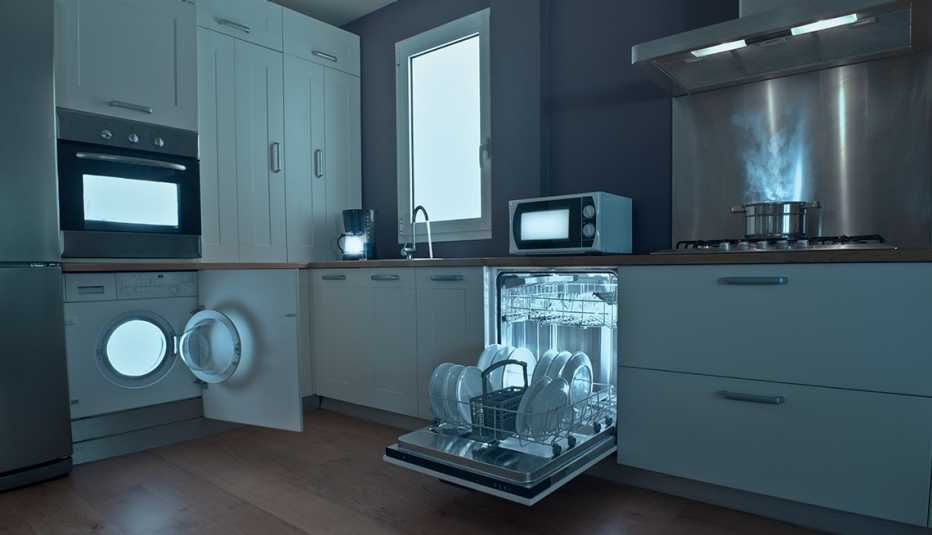

































































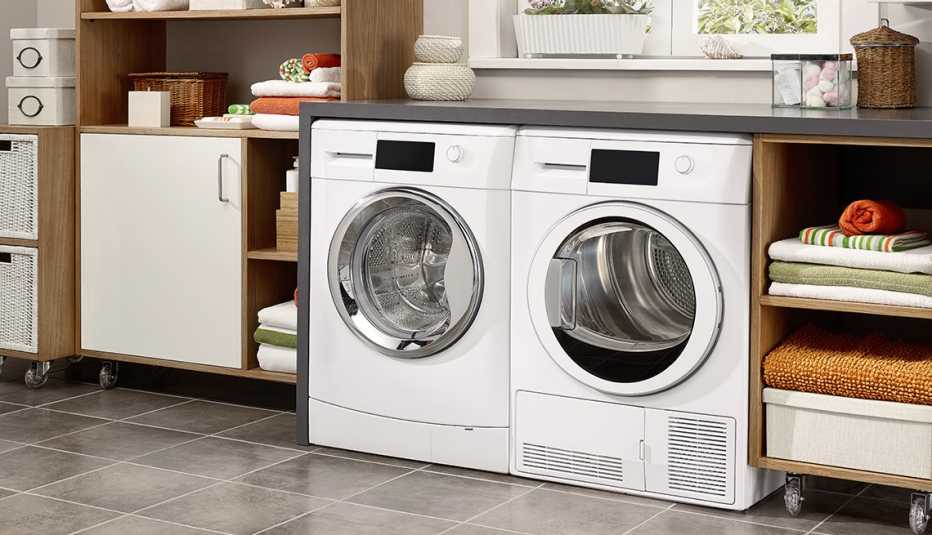
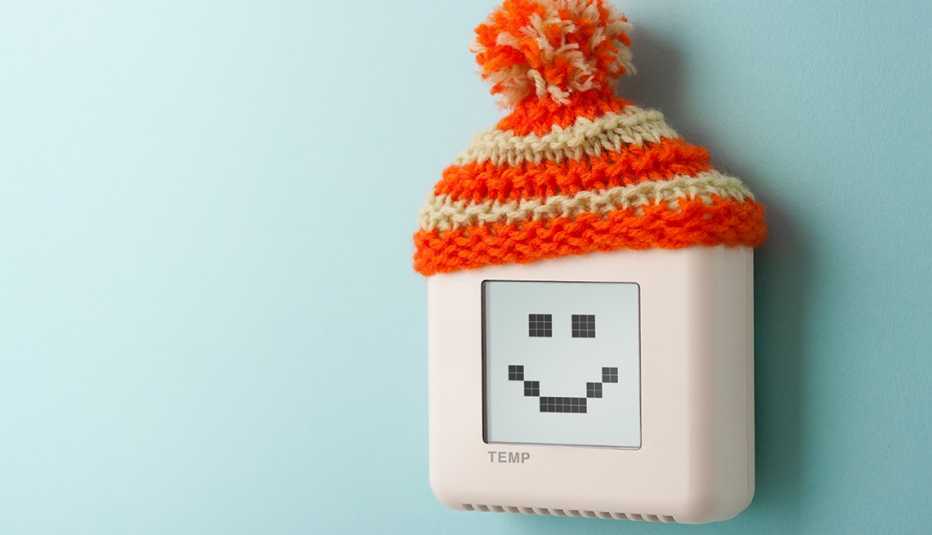
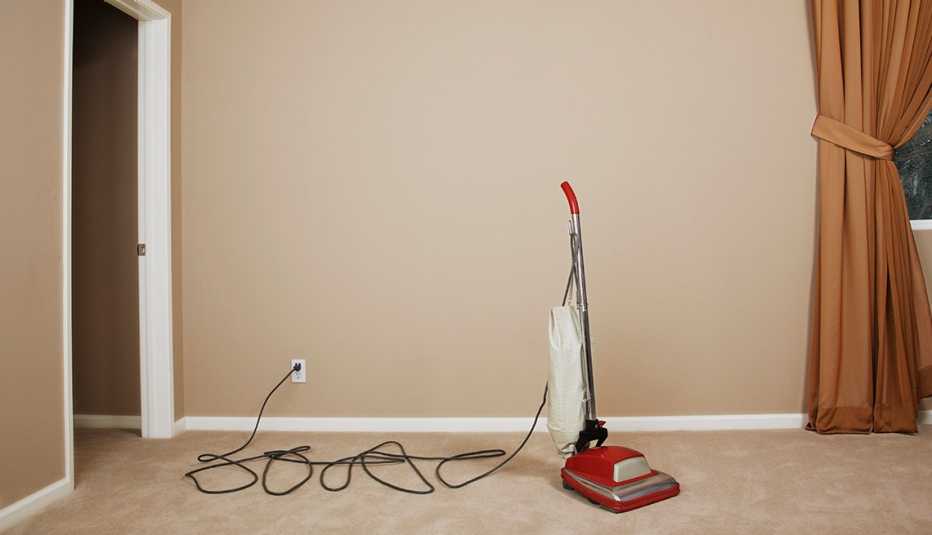
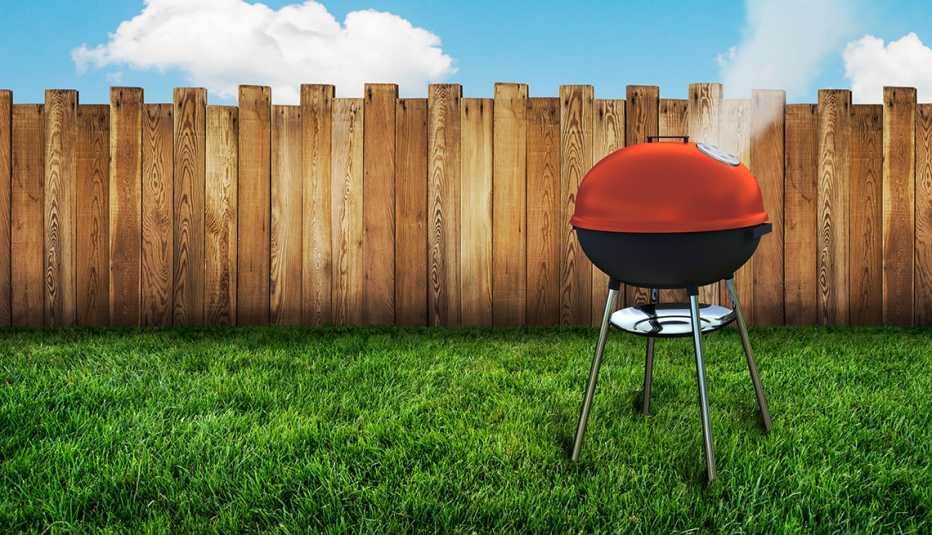
You Might Also Like
Find the Best Vacation Rental
28 tips on planning — and enjoying — your time away
Efficiently Clean Your Home
Room by room, now’s the time to tackle your to-do list
Manage Seasonal Allergies
Achoo! How to understand and treat your symptoms